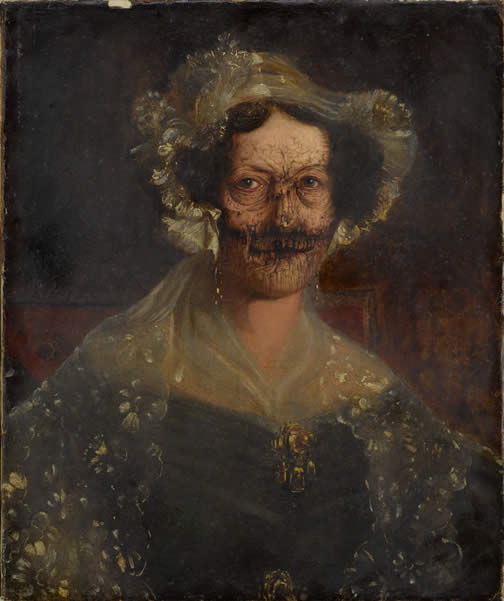18 June – 20 September 2015
The Second Hand: Reworked Art Over Time was an exhibition of historical and contemporary works, in a variety of media, all of which involve one artist actively engaging with the work of another. In some cases this involves physical reworking of the original object, but in others it can mean altering, completing or challenging another artist’s idea. Curated by students of the Courtauld’s MA Curating the Art Museum, The Second Hand responds to The Courtauld Gallery’s Summer Showcase Unfinished…Works from The Courtauld Gallery, on show in the adjacent gallery.

Drawing mainly from The Courtauld Gallery’s own collection and the Arts Council Collection, The Second Hand created unexpected confrontations and dialogues between very different works of different periods. It included a drawing by Michiel Coxie which was later revised by Rubens, and works by the contemporary British artists Jake and Dinos Chapman, who bought anonymous historical portraits and ‘improved’ them with their own additions. In an act of familial legacy, Gainsborough Dupont completed the unfinished self-portrait of his deceased uncle Thomas Gainsborough. Martin Boyce transformed modernist designs in Dark Unit and Mask, combining an Eames cabinet with broken elements from an Arne Jacobsen chair to create a contemporary work. In Melanie Smith’s video Aztec Stadium. Malleable Deed, three-thousand Mexican public school children came together to recreate famous art images. This work questioned the notion of public and private images, and western and non-western art history.
An exhibition of major works, The Second Hand raised fascinating questions about artistic intent, the nature of authorship, and the multilayered meanings of works that in different ways bear the mark of more than one hand. It traced the longer history of a practice that is widespread in contemporary art.

